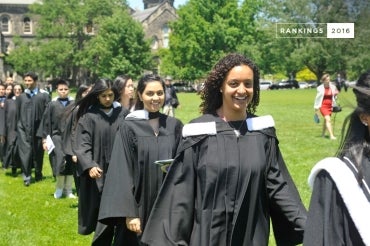U of T nabs 27th spot in top universities ranked worldwide

Published: August 15, 2016
The students aren’t yet back but that doesn’t mean things are quiet on campus!
Today, Shanghai Jiao Tong University released its latest Academic Ranking of World Universities (ARWU) report, with the University of Toronto once again placing in the upper echelon of top-ranked global universities and retaining its spot as the leading institution of higher learning in Canada.
“Achieving excellence is something our faculty, staff and students at the University of Toronto strive for every day. The international rankings, despite differences in methodologies and data sources, consistently continue to place us among the leading institutions globally,” said Vivek Goel, U of T’s vice-president of research and innovation.
“We’re proud the ARWU has once again recognized the research excellence we foster and produce to help solve some of the world’s most pressing challenges.”
Of the top 100 universities worldwide, as ranked by ARWU, Harvard University retained the top spot again in 2016. It has remained in the No. 1 position every year since ARWU started scoring the top 1,200 universities worldwide in 2003.
Following the University of Toronto in the 27th spot, the next Canadian university to place was the University of British Columbia at 34th, followed by McGill University at 63rd and McMaster University at 83rd.
This is the first of several high-profile higher education rankings coming out over the 2016-2017 academic year, including:
- Reuters World’s Most Innovative Universities; Times Higher Education (THE) world rankings; and QS World University Rankings in September, followed by
- U.S. News and World Report Global University Rankings; Performance Ranking of Scientific Papers for World Universities by National Taiwan University (NTU); and Times Higher Education (THE) subject rankings later this fall.
The various independent ranking systems use different criteria and weigh them according to their own rules and standards.
ARWU, for example, compiles its rankings using several indicators of academic or research performance, including alumni and faculty winning Nobel Prizes and Fields Medals (10 per cent weight to alumni and 20 per cent to staff), highly cited researchers in 21 broad subject categories (20 per cent weight), papers published in Nature and Science (20 per cent weight), papers indexed in major citation indices (20 per cent weight), and the per capita academic performance of an institution (10 per cent weight).
For each indicator, the highest scoring institution is assigned a score of 100, and other institutions are calculated as a percentage of the top score.



